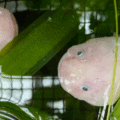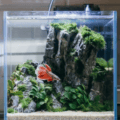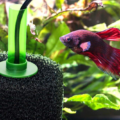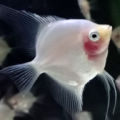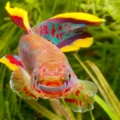The Asian Arowana, its majestic appearance and distinctive characteristics have captivated enthusiasts worldwide. It is a rewarding species for dedicated hobbyists willing to provide the specialized care it requires as outlined in this comprehensive guide.
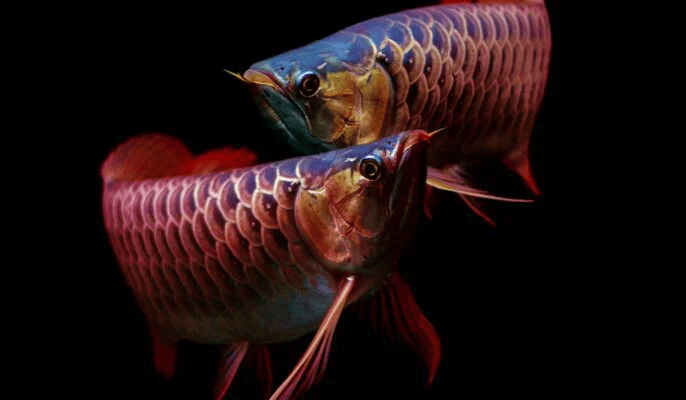
Introduction
The Asian Arowana, sometimes referred to as the dragon fish or dragon-tail fish holds a highly esteemed and iconic status in the aquarium industry.
Its majestic appearance, brilliant colors, and distinctive characteristics have captivated enthusiasts worldwide.
In this comprehensive guide, we will dive into various types of Arowana care, from its characteristics and origins to breeding and beyond, providing invaluable information for enthusiasts.
Characteristics
The Asian Arowana (dragon fish) is a freshwater fish belonging to the Osteoglossidae family. Prominent for its elongated body, well-defined barbels, and large metallic scales. The Asian arowana teeth play a vital part in capturing prey and upholding its position as the top predator.
The streamlined morphology enables them to glide effortlessly through the water with grace and quickness. With their vivid hues and commanding presence, Asian Arowana conveys an aura of power and elegance that captivates observers.
| Scientific Name | Scleropages formosus |
| Common Name | Asian Arowana |
| Origin | Southeast Asia |
| Life expectance | 20-30 years |
| Size | 60-90 centimeters |
| Color and marking | Red, gold, green and blue |
| Tank size | Minimum tank size of 150 gallon |
| Temperament | Solitary and territorial |
Origin:

Native to Southeast Asia, the Asian Arowana fish typically resides in slow-moving waters such as rivers, streams, and flooded forests. Its distribution spans countries like Malaysia, Indonesia, Thailand, and Vietnam.
Due to habitat devastation and overfishing, wild populations have been reduced, leading to its classification as a protected species.
The scientific name, Scleropages formosus, reflects its robust nature, with “Scleropages” derived from Greek, meaning “hard scales,” and “formosus” denoting “beautiful” or “handsome” in Latin.
Size
Asian Arowanas fish size grows much larger in the wild than their captive counterparts, reaching lengths of over one meter (39 inches).
However, in aquarium settings, they usually attain sizes ranging from 60 to 90 centimeters (24 to 35 inches), though this depends on factors like genetics, what they eat, and tank conditions.
Colors and Markings
The vivid colors and elaborate markings of the Asian Arowana species are among its notable characteristics.
These Asian Arowana species exhibit various color morphs, including red, green, gold, and silver. The scales shimmer under light, creating a fascinating appearance reminiscent of valuable metals.
Moreover, Asian Arowanas frequently display unique patterns and markings, such as scales resembling dragon scales or intricate net-like designs, which further enhance their allure and enigma.

Tankmates
When considering tankmates for Asian Arowanas, it’s essential to choose species that are fitting in terms of size, temperament, and water parameters for the Arowana in fish tank.
Due to their predatory temperament and substantial size, it is advisable to house them with robust tankmates such as large catfish, other large cichlids, or similarly sized fish that are capable of defending themselves.
Life Expectancy
With appropriate care, Asian Arowanas have the potential to live for several decades, making them long-term companions for dedicated hobbyists.
On average, they have a life expectancy of 20 to 30 years, although some individuals may exceed this timeframe under optimal conditions.
Care
Asian Arowanas require meticulous care to thrive in captivity. Adequate tank size, water quality, and environmental enrichment are paramount to their well-being.
- Tank Size: Due to their large size and active nature, Asian Arowanas necessitate spacious tanks. A minimum tank size of 180 gallons is recommended for juveniles, with larger accommodations required as they grow.
- Water Parameters: The preferred water conditions for this fish are slightly acidic to neutral water with a pH limit of 6.5 to 7.5. Temperature should be maintained between (24°C to 28°C), and diligent filtration is essential to maintain water quality.
- Aquascape: Creating a naturalistic environment with ample hiding spots and driftwood mimics their native habitat and reduces stress. Dense vegetation, floating plants, and subdued lighting further enhance their well-being.
- Social Behavior: Asian Arowana are solitary fish that may exhibit territorial behavior, especially towards conspecifics and smaller tankmates. Keep them in spacious aquariums with plenty of hiding spots and visual barriers to reduce aggression and minimize stress.

Diet and Feeding
Asian Arowanas are carnivorous predators that mostly feed on small fish, insects, crustaceans, and even small mammals in their natural habitat.
In captivity, it is important to provide an Asian Arowana diet comprising nutrient-dense food rich in protein. This will help promote their growth and enhance vibrant coloration.
- Commercial Pellets: Formulated pellets specifically designed for Asian Arowanas to provide a well-balanced diet rich in essential nutrients. Select pellets of proper size to avoid choking hazards, and supplement with occasional treats like earthworms, shrimp, or feeder fish.
- Variety is Key: Offering a wide range of food options guarantees nutritional adequacy and prevents dietary deficiencies. Switch between pellets, frozen foods, and live prey to mirror their innate feeding behavior and promote overall health.
Gender Differences
Identifying the gender of Asian Arowana species can be challenging, particularly during the juvenile stage when sexual traits are less prominent.
Nevertheless, fully developed males generally exhibit broader heads, thicker bodies, and longer pectoral fins compared to females.
Moreover, males may develop conspicuous nuchal humps on their heads during breeding season, which further assist in identification.
Breeding

Breeding Asian Arowanas in captivity is a complex and demanding undertaking that involves careful strategizing, ideal conditions, and endurance.
Due to their aggressive nature and territorial behavior, breeding pairs should be carefully selected and monitored to prevent injury or fatalities.
- Pairing: Introduce compatible breeding pairs into a spacious breeding tank equipped with suitable spawning substrates like PVC pipes or ceramic pots.
- Conditioning: Before spawning, prepare the breeding pair by providing them with a varied diet that is high in protein and essential nutrients. Gradually increase water temperature and perform frequent water changes to simulate natural breeding conditions.
- Spawning Behavior: During the process of courtship, males display vibrant colors and intricate wooing rituals to attract females thus playing a vital role in reproduction. After the eggs are laid and fertilized, cautiously remove adults to prevent predation and guarantee the highest possible survival rate for the eggs.
- Fry Care: Asian Arowana fry is delicate and requires meticulous care to thrive. Provide a separate rearing tank with gentle filtration, subdued lighting, and infusoria or commercially available fry food to nourish the developing larvae.
- Grow-Out: As the fry grows, transition to larger tanks and offer progressively larger prey items to support growth and development. Monitor water parameters closely and perform regular maintenance to prevent disease outbreaks and ensure optimal growth rates.
Conclusion:

The Asian Arowana is a captivating and rewarding species for dedicated hobbyists willing to provide the specialized care it requires. By understanding its unique characteristics, habitat requirements, and breeding behavior, enthusiasts can cultivate thriving aquariums and contribute to the conservation of this magnificent species.
With proper care and appreciation, the Asian Arowana will continue to enchant and inspire generations of aquarists worldwide.


